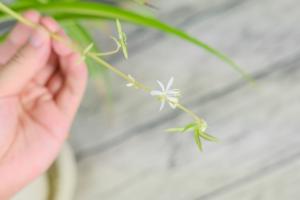1、 Sow
This method is relatively simple. There is no specific time from the end of spring to the middle of autumn. First of all, we need to prepare the planting soil, which is slightly fertile and has good drainage performance and air permeability. Secondly, the sowing spacing should not be too small. It should be slightly larger than the diameter of blue fescue when it matures. Although the diameter of blue fescue when it first grows is smaller, it will grow very rapidly after successful sowing. If the spacing is too small, the later management will be very troublesome. After sowing, you need to cover the top layer of the seed with a layer of soil, and then wait for the blue fescue seed to germinate

2、 Separate planting
This is the quickest way. The planting time is relatively clear, generally in the spring of each year, around April. One of the better points of planting separately than sowing is that it can maintain its color. The reason why we need to plant separately is that one is for reproduction, and the other is that its small plants are relatively vigorous, so the blue of personality can be brought into full play. With the growth of time, blue fescue will gradually grow to the outside, but the most middle part will gradually die, so we must plant separately in time to stop this phenomenon. Generally, planting should be carried out every two or three years

3、 Growth preference
1. Illumination
Blue fescue is a plant that likes sunshine. Generally, under the sunshine, it can show people the most beautiful blue, so it can be illuminated appropriately
2. Soil
Although blue fescue is a plant on barren and arid soil, it still needs soil with a little water and good drainage and ventilation. The pH value can be medium and weak acid

3. Fertilization
Blue fescue does not need excessive fertilization, otherwise it will cause death. Generally, thin fertilizer can be applied, but not too often
4. Moisture
Water monitoring should be strengthened in the first year of blue fescue planting, because sufficient water is needed for root development. After the root grows and matures, it can be watered once a month without too much water management

 how many times do yo...
how many times do yo... how many planted tre...
how many planted tre... how many pine trees ...
how many pine trees ... how many pecan trees...
how many pecan trees... how many plants comp...
how many plants comp... how many plants can ...
how many plants can ... how many plants and ...
how many plants and ... how many pepper plan...
how many pepper plan...































